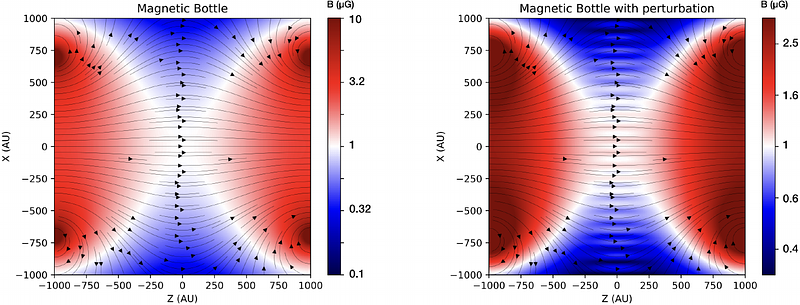Chaotic Behavior of Trapped Cosmic Rays

Chaotic Behavior of Trapped Cosmic Rays
Vanessa López-Barquero, Paolo Desiati
AbstractRecent experimental results on the arrival direction of high-energy cosmic rays have motivated studies to understand their propagating environment. The observed anisotropy is shaped by interstellar and local magnetic fields. In coherent magnetic structures, such as the heliosphere, or due to magnetohydrodynamic turbulence, magnetic mirroring can temporarily trap particles, leading to chaotic behavior. In this work, we develop a new method to characterize cosmic rays' chaotic behavior in magnetic systems using finite-time Lyapunov exponents. This quantity determines the degree of chaos and adapts to transitory behavior. We study particle trajectories in an axial-symmetric magnetic bottle to highlight mirroring effects. By introducing time-dependent magnetic perturbations, we study how temporal variations affect chaotic behavior. We tailor our model to the heliosphere; however, it can represent diverse magnetic configurations exhibiting mirroring phenomena. Our results have three key implications. (1)Theoretical: We find a correlation between the finite-time Lyapunov exponent and the particle escape time from the system, which follows a power law that persists even under additional perturbations. This power law may reveal intrinsic system characteristics, offering insight into propagation dynamics beyond simple diffusion. (2)Simulation: Chaotic effects play a role in cosmic ray simulations and can influence the resulting anisotropy maps. (3)Observational: Arrival maps display areas where the chaotic properties vary significantly; these changes can be the basis for time variability in the anisotropy maps. This work lays the framework for studying the effects of magnetic mirroring of cosmic rays within the heliosphere and the role of temporal variability in the observed anisotropy.